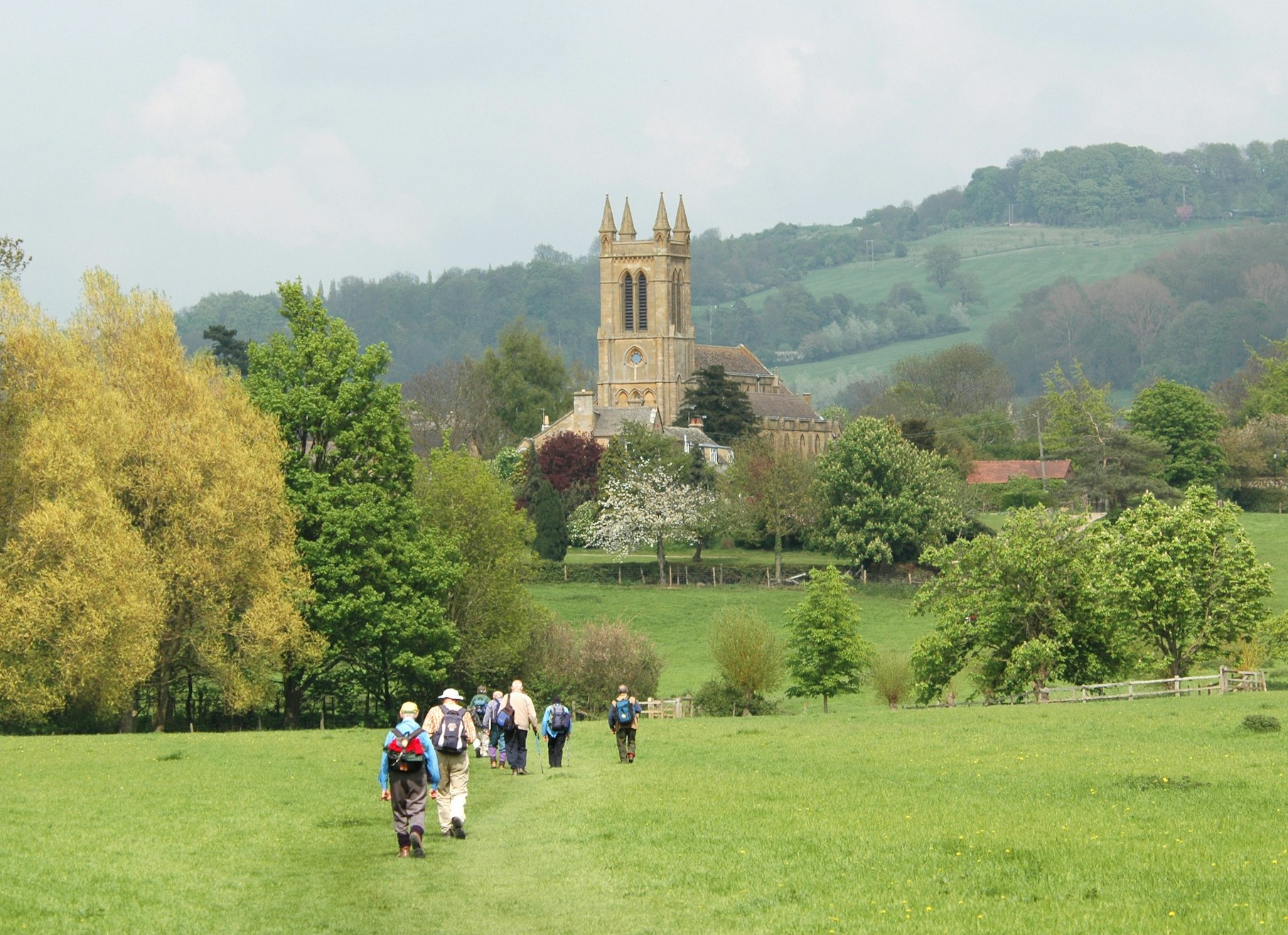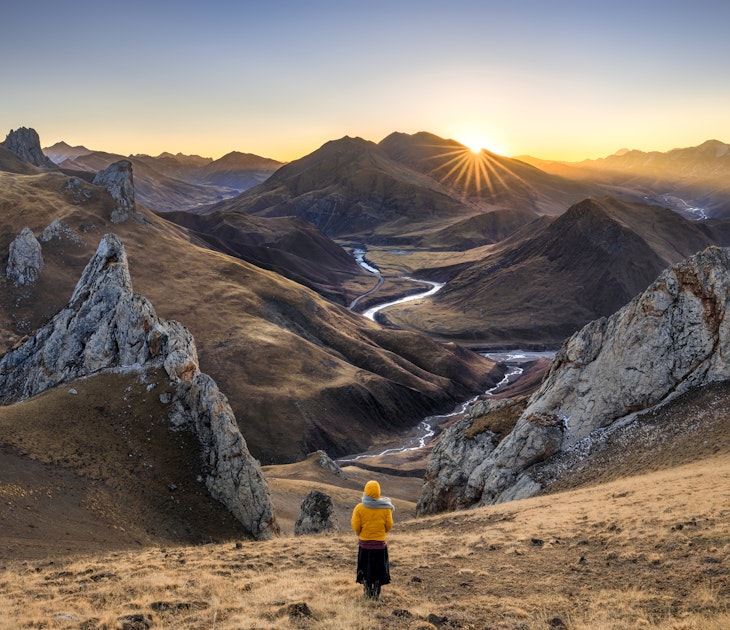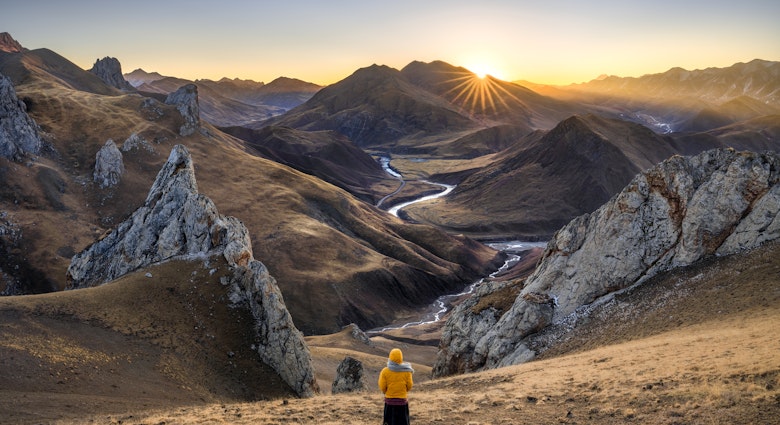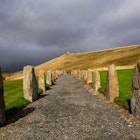Lush green fields dancing with wildflowers, bordered by hedgerows and ancient stone walls. Horses that come right up and nuzzle your face and neck. Butterflies hovering around the gardens of postcard-perfect cottages.
It’s all in a day’s walk on the Cotswold Way, a 102-mile trail that winds its way through the Cotswold Hills in England, from Chipping Camden in the north to the Georgian city of Bath in the south. This long-distance trail has been around in some form since the 1970s, and became an official National Trail in 2007.
I decided to walk the Way in May this year, a few months after I’d gotten laid off from my tech job. I’d always wanted to do a long walk, and after considering walks in several other countries (Spain’s Camino de Santiago – too much of a production; Italy’s Amalfi Coast – too many stairs), the Cotswold Way seemed like the right length and had good early summer weather. And unlike some of England’s other National Trails, it isn’t terribly difficult.
Mostly, I just wanted to be out in the world – the sun on my face, dirt beneath my feet: the opposite of a deskbound knowledge job that I’d had for the past six years. And it worked: I ended the Cotswold Way feeling inspired, reinvigorated, and fully present in the moment and in my body.

Walking the Way, your way
There’s no “right” way to walk the Cotswold Way, and over my time on the trail I ran into all sorts of walkers, from those who were taking it in five-mile sections per day to those who were attempting the whole 100 miles in a single (long) weekend. The trail is multi-use in many places, so you often run into locals on horses, mountain bikes or just out with their dogs in the morning.
Most walkers start in Chipping Camden, in the north, and end in front of Bath’s Abbey, which provides a dramatic finale. (There are markers inlaid in the ground at both, for all photo needs.) After deciding which direction to walk, the next decision is how many days to spend on the trail. Do you want to spend the whole day walking and pushing for mileage? You might be able to take the trail in five to seven days. Or do you want some time to explore the towns, parks, and other delightful places that you might pass? Plan for eight or nine days walking, perhaps with a rest day in the middle.
I ended up walking the trail’s full length in seven days, which meant 15-mile days were the average and one memorable day had me walking (after some wrong turns) over 18. Even though I was walking alone, I used a tour company to plan my walk. The experts spaced it all out, booked my B&Bs, gave me tips for where to go for lunch and dinner, and even moved my suitcase from one B&B to the next, leaving me to carry only a day pack.
On the DIY end of the spectrum, there are places to camp along the trail. While wild camping is prohibited, you may have some luck asking farmers to pitch in their fields (always ask first).

What’s the trail like?
The trail was delightful in late spring when I walked along it. The Cotswolds are still relatively rural and untouched by big agriculture, so you are truly walking through a patchwork of fields – some for grazing sheep, some planted with wheat and rapeseed, some fallow meadows of grass and wildflowers. You’ll wind in and out of woods, past ancient hill forts and barrows, and through towns built entirely from the distinctively peachy Cotswold limestone. The vast majority of it is unpaved, though there are a few stretches along roads and motorways.
Because of this variety, you will be taking a lot of turns – and you’ll need to depend on spotting the guideposts featuring yellow stickers with acorns on them. (Make sure you’re following the acorn; there are a lot of other trails in the region.) The vast majority of the turns are easy to see, but every day I definitely had at least one or two moments when I either wasn’t paying attention or missed a sticker in overgrown foliage and strayed off the trail.
Eventually, I came to embrace getting lost as part of the process. It helps to have downloaded maps so you can see where the trail is and figure out how to get back on it when you realize you’ve missed a signpost (usually when you come to an intersection without a sticker, or when you realize you haven’t seen one in a long time). I recommend having a backup paper map, too. One afternoon, when my GPS wasn’t working, I was happy to have hand-drawn maps in my guidebook to help lead me back to the trail.
The Cotswold Way is considered one of the easiest long-distance trails in England – but that hardly means it’s effortless. You will climb a thousand or more vertical feet each day, depending on your daily mileage count. A lot of these trails aren’t graded especially well, so you can expect some steep climbs. (The steepest, like Cooper’s and Cleve Hills, are also some of the shortest.)
Take your time, realizing that the biggest climbs are always rewarded with breathtaking views of the countryside. On a clear day along the southern half of the trail, you can see the Severn Valley and bridge into Wales.

What to bring on the Cotswold Way
I assumed that I’d be able to stop in the towns I passed to pick up anything I forgot to pack. I was incorrect. While you do walk through plenty of small towns, most only have a few houses and a pub; few have amenities like a grocery store and pharmacy, especially on the northern part of the trail. I also was hiking over a bank-holiday weekend, and – wouldn’t you know it – that Sunday and Monday were the days I most needed a pharmacy. Everything was closed.
Plan ahead and rely on your B&B hosts, who see a lot of walkers and will be very knowledgeable about at least the next section of trail. I got used to carrying plenty of water in my day pack: the opportunities to refill can be few and far between in the afternoons, and I ran out of water early a few days.
I also was very glad I’d checked a bag on my flight over so I could bring my hiking poles. They were not only indispensable for some of the biggest climbs, but also helped immeasurably with balance on the steep descents and uneven walking surfaces. My ankles took a beating from walking on rocks and the sides of hills, but they would have been in worse shape without the poles.
Finally, when I walked the trail in late May, there were nettles everywhere on the trail – and they were vicious. And I mean everywhere: they had grown around gate latches and brushed against your legs as you walked past. Wear pants and bring anti-itch cream to help them.
None of these challenges took away significantly from the beauty of the experience. If you’re looking for a walk in the English countryside with some of the most pleasant scenery you’ve ever seen, the Cotswold Way is unforgettable.












